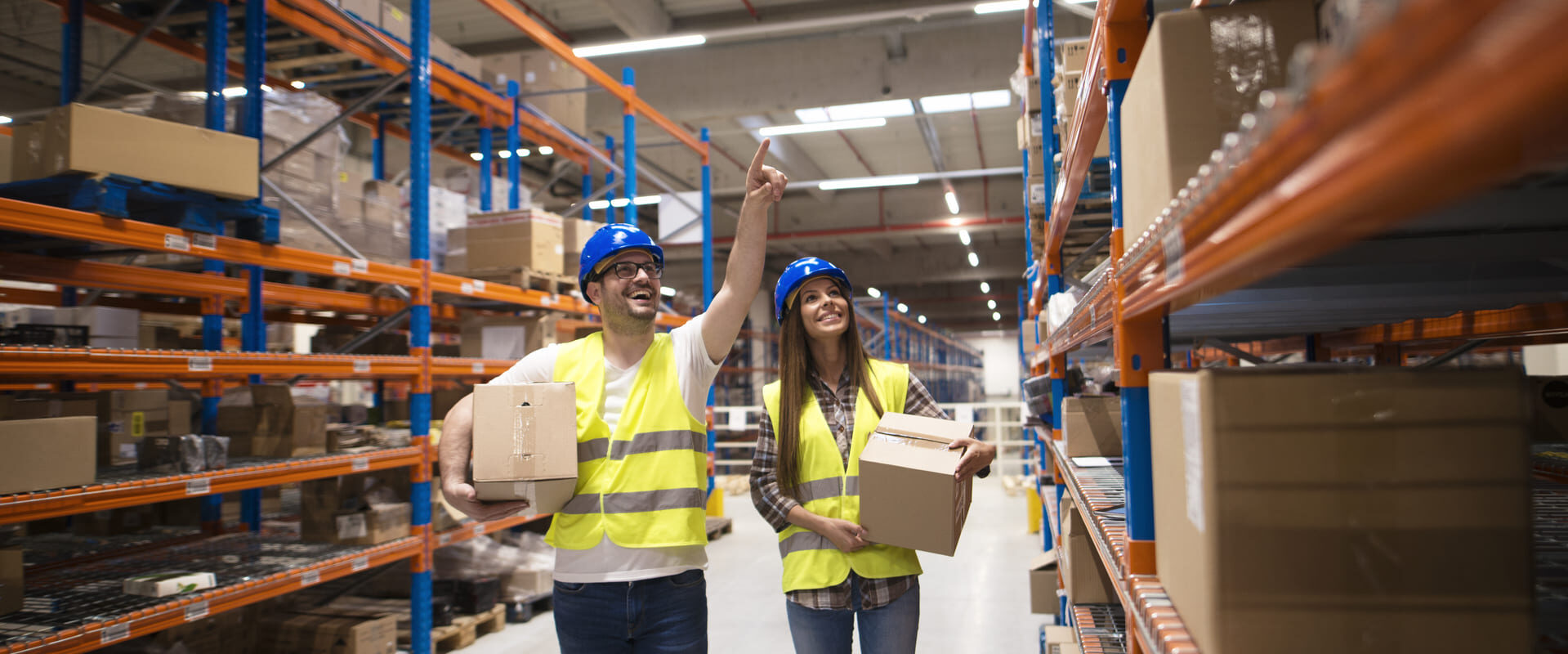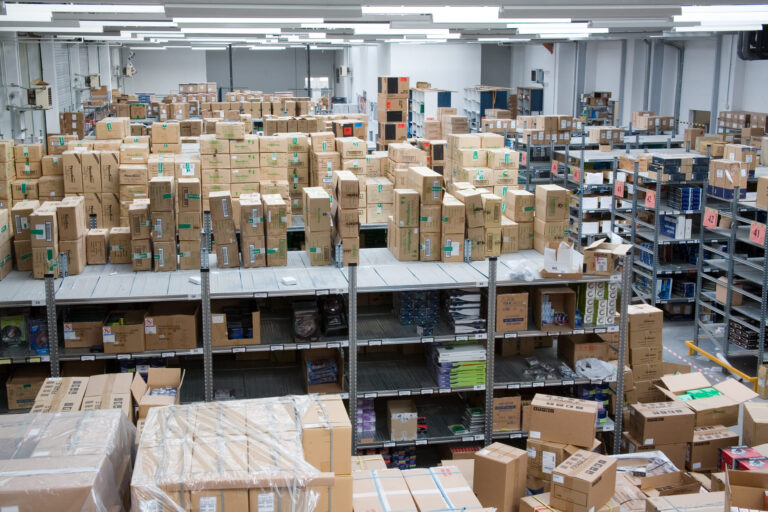What Are The Main Benefits Of Urban Distribution Centers?

What are distribution centers?
A distribution center is a logistics facility designed to store, manage, and efficiently distribute goods to various destinations, such as retail stores, wholesalers, or directly to customers. These centers are essential in the supply chain, acting as hubs for receiving, organizing, and dispatching products to ensure timely delivery.
Their strategic locations near highways and major metropolitan areas enable faster shipping times, making online purchasing more practical than ever. Whether referred to as a DC, warehouse, cross-dock facility, fulfillment center, or package handling center, distribution centers typically include three core areas: the receiving dock, storage, and shipping.
It’s important to note the distinction between a distribution center and a traditional warehouse. A warehouse primarily focuses on long-term storage of goods and is often used by manufacturers, wholesalers, or import/export businesses. Warehouses are commonly situated near seaports, rail yards, or airports to hold bulk inventory. In contrast, distribution centers prioritize efficient movement of products (picking, packing, and shipping) to fulfill customer orders rapidly. In short, warehouses hold goods, whereas distribution centers keep goods moving. Modern distribution centers – especially those run by third-party logistics (3PL) providers – also leverage advanced technology and best practices to streamline operations and reduce costs.
Benefits of a Distribution Center
Distribution centers offer numerous benefits that improve supply chain performance. Below are key advantages of using a distribution center in logistics:
Cost Savings
Distribution centers help lower logistics costs by consolidating shipments, reducing transportation expenses, and optimizing storage efficiency. By managing inventory closer to demand centers, they minimize unnecessary handling and transit expenses.
Speedy Order Fulfillment
Distribution centers are equipped to process orders rapidly, ensuring faster delivery to customers. Advanced warehouse management systems and automation (like conveyor sorting or robotic picking) enable quick turnaround from order receipt to dispatch. Moreover, placing distribution centers near major transportation hubs or customer concentrations means products travel shorter distances for final delivery. This strategic positioning enables same-day or next-day shipping in many cases, greatly improving last-mile delivery times. Faster fulfillment not only delights customers but also gives businesses a competitive edge in an era when on-demand, speedy shipping is expected.
Streamlined Inventory Control
These centers improve inventory accuracy by using advanced tracking systems, reducing overstock and stockouts. This leads to better demand forecasting and efficient stock management.
Enhanced Visibility Across the Supply Chain
By integrating technology such as real-time tracking and reporting tools, distribution centers provide clear insights into inventory levels, order statuses, and overall supply chain performance.
Optimized Data and Analytics
Equipped with data management systems, distribution centers enable better decision-making by analyzing operational metrics, improving forecasting accuracy, and tracking key performance indicators (KPIs).
Boosted Profit Margins
Through cost-effective operations, reduced delivery times, and improved customer satisfaction, distribution centers ultimately contribute to increased profitability for businesses.
Main characteristics of a good distribution centers:
Not all distribution centers are equal. The most effective facilities share some common characteristics that enable their high performance:
- Strategic Location and Design: A good distribution center is located near major demand centers or transit routes, reducing transit times. It is designed with efficient layout and workflows (e.g. logical product zoning, adequate dock doors) to handle high volumes smoothly.
- Fast, Accurate Order Processing: Top distribution centers fulfill customer orders quickly and correctly while keeping costs down. This involves automation where appropriate, well-trained staff, and standardized processes to minimize errors and delays. In practice, that means orders go out on time, in full, with minimal handling costs.
Which businesses benefit from distribution centers:
- Retail: Ensuring timely deliveries to stores or fulfilling direct-to-consumer orders.
- E-commerce: Managing large volumes of online orders efficiently.
- Pharmaceuticals: Providing secure storage and distribution for medical products.
- Food and Beverage: Preserving the quality of perishable items with cold storage solutions.
- Online retailers.
What are the benefits of urban distribution centers?
With the rise of e-commerce and increasing consumer expectations for fast delivery, urban distribution centers have become especially critical. An urban distribution center (sometimes called an urban fulfillment center or city warehouse) is a warehouse or logistics hub located within or very close to a major city to serve that city’s population. Urban warehouses play a crucial role in modern supply chains by acting as last-mile logistics solutions near the customer. They integrate warehousing, order picking, and distribution functions under one roof in a dense area.
Several trends are driving the need for urban distribution centers. The explosive growth of e-commerce means more goods than ever need to be shipped directly to consumers in cities. Global retail e-commerce sales are projected to surpass $6 trillion in 2024, and much of that demand is concentrated in metropolitan areas. Consumers increasingly expect same-day or next-day delivery for online purchases, especially in urban settings. By positioning inventory nearby, urban distribution centers enable companies to meet these expectations. In fact, last-mile delivery (the final leg of delivery to the customer) is the most time-consuming and costly part of shipping, accounting for about 41% of total delivery costs. Placing distribution hubs in cities cuts down last-mile distance, helping to control these costs and speed up service.
Moreover, the ubiquity of mobile shopping has raised the bar for convenience. City dwellers often place orders via smartphone and want their items almost immediately. Urban fulfillment centers make this possible by shortening delivery routes. They also streamline returns processing by being local drop-off points for unwanted items, which improves the customer experience in densely populated areas.
Urban distribution center positive impacts
Urban distribution centers (UDCs) offer several positive impacts, particularly in addressing the challenges of modern urban logistics and distribution. Here are the key benefits:
Environmental Benefits
- Reduced Carbon Emissions:
- Shorter last-mile delivery routes reduce fuel consumption and greenhouse gas emissions.
- UDCs enable the use of eco-friendly transportation options like bicycles or electric vehicles.
- Decreased Traffic Congestion:
- Consolidating deliveries reduces the number of vehicles on city roads.
Economic Benefits
- Cost Efficiency for Businesses:
- Proximity to urban areas lowers delivery costs and improves delivery speed.
- Bulk deliveries to UDCs save costs compared to multiple smaller deliveries.
- Improved Inventory Management:
- Businesses can maintain smaller inventory levels with faster replenishment from nearby UDCs.
Operational Benefits
- Faster Last-Mile Deliveries:
- Reduced travel distance and time enhance customer satisfaction with same-day or next-day delivery options.
- Better Utilization of Resources:
- Shared storage and distribution facilities reduce redundant operations and maximize efficiency.
Social Benefits
- Improved Quality of Urban Life:
- Less air and noise pollution improves living conditions for residents.
- Job Creation:
- UDCs provide employment opportunities in logistics, warehouse management, and delivery services.
Sustainability and Planning
- Enhanced Urban Planning:
- UDCs support sustainable urban growth by optimizing land use and aligning with smart city initiatives.
- Support for Circular Economy:
- Facilitates reverse logistics for recycling and returns, promoting sustainability.
By integrating UDCs into urban logistics systems, cities and businesses can address challenges associated with increasing e-commerce demands, while promoting environmental, social, and economic well-being.
Urban distribution center negative impacts
Urban distribution centers (UDCs) play a critical role in improving the efficiency of last-mile deliveries. However, they can also have negative impacts on urban environments. Some of the key issues include:
Traffic Congestion
Increased truck and delivery van movements in densely populated areas can exacerbate traffic congestion.
Delivery vehicles often double park or use loading zones, which disrupts traffic flow.
Air Pollution
Diesel-powered delivery vehicles contribute to air pollution, releasing harmful particulate matter (PM) and nitrogen oxides (NOx).
Frequent idling during loading/unloading further exacerbates emissions.
Noise Pollution
Loading and unloading activities can generate significant noise, disturbing nearby residents and businesses.
Delivery vehicle operations, especially during early or late hours, can be a source of noise complaints.
Space Consumption
UDCs require space in urban areas, where real estate is scarce and expensive.
The allocation of land for distribution centers might displace other community-focused uses, such as parks or affordable housing.
Visual Impact
Large warehouses or distribution hubs can be visually unappealing and disrupt the aesthetic appeal of neighborhoods.
Impact on Small Businesses
The presence of large distribution centers might favor big retailers with robust supply chains, potentially undermining local and smaller businesses.
Waste Generation
Packaging materials from increased e-commerce deliveries can add to urban waste streams, often overwhelming waste management systems.
Social Inequities
Urban distribution centers are often located in lower-income neighborhoods due to cheaper land, potentially concentrating environmental and health burdens in these communities.
Distribution center vs. warehouse:
Warehouses are spacious facilities designed for the long-term storage of large quantities of goods and are often strategically located near delivery destinations to streamline shipping and reduce costs. In contrast, distribution centers function as comprehensive logistics hubs, handling not only storage but also order picking, packing, and shipping to fulfill customer needs. While the terms “warehouse” and “distribution center” are often used interchangeably, they differ significantly in purpose and operation. Distribution centers, particularly those managed by third-party logistics providers (3PLs), offer dedicated support, advanced infrastructure, cutting-edge technology, and proven best practices to help businesses save time and reduce logistics costs by managing complex and time-intensive tasks.
Costs of Using Distribution Centers
The costs of using distribution centers (DCs) vary depending on several factors, including the size, location, services offered, and specific needs of the business. Here’s a breakdown of the typical costs associated with using distribution centers:
- Storage Costs
Per Pallet or Cubic Foot: Most DCs charge based on the number of pallets or cubic footage occupied. Rates may vary between $10-$25 per pallet per month or $0.50-$2 per cubic foot per month.
Specialized Storage: Costs can increase for temperature-controlled (cold storage) or secure storage for high-value goods.
Seasonality: Some DCs charge higher rates during peak seasons or offer discounts during slower periods.
- Handling Fees
Inbound Handling: Costs for receiving and checking in inventory, typically $5-$15 per pallet or $0.50-$2 per unit.
Outbound Handling: Charges for picking, packing, and preparing shipments, often $2-$5 per order or a per-item fee of $0.20-$1.
Special Services: Custom labeling, kitting, or assembly might incur additional fees.
- Shipping and Transportation
Costs for transportation from the DC to the final destination depend on:
Distance to the destination.
Shipping carrier and method (e.g., ground, air, or expedited).
Freight consolidation and optimization services, which may reduce overall costs.
- Administrative and Management Fees
Account Setup Fees: Initial setup costs for onboarding new clients, typically $100-$500.
Monthly Account Fees: Some DCs charge ongoing management fees, ranging from $50-$300/month.
Inventory Management Software: Costs for software integration or usage, often $50-$200/month.
- Specialized Equipment
If double-wide pallets, forklifts, or specialized racking are needed, additional fees may apply.
- Value-Added Services
Customization: Services like gift wrapping, engraving, or special packaging may cost extra.
Returns Management: Handling returned products typically costs $2-$5 per return.
Cross-Docking: Fees for transferring goods directly from inbound to outbound trucks, often $2-$10 per pallet.
- Location and Market Dynamics
Costs vary significantly based on the geographic location of the DC. Urban or coastal areas often have higher rates due to real estate costs.
Example Cost Calculation
For a medium-sized business storing 500 pallets at a standard DC:
Storage: 500 pallets × $15 = $7,500/month
Inbound Handling: 20 truckloads × 26 pallets × $10 = $5,200/month
Outbound Handling: 1,000 orders × $3 = $3,000/month
Total Monthly Cost: ~$15,700
Companies providing distribution centers in the USA
E-commerce companies in the United States utilize a vast network of distribution centers to ensure efficient order fulfillment and timely deliveries. Here are some prominent distribution centers and fulfillment service providers:
ShipBob operates multiple fulfillment centers across the U.S., including locations on the West Coast, East Coast, Midwest, and the South. This extensive network enables them to offer fast and affordable shipping solutions for online brands.
eFulfillment Service is recognized for assisting international retailers launching in America. They provide order fulfillment services tailored to small and medium-sized businesses, with a focus on scalability and cost-effectiveness.
With fulfillment centers in Las Vegas, Nevada, and Columbus, Ohio, J&J offers rapid, cost-effective fulfillment services across the U.S., ensuring 1-3 day shipping nationwide.
NextSmartShip provides e-commerce businesses with the flexibility to choose storage locations on the East Coast, West Coast, or both, facilitating efficient shipping across major U.S. markets.
As a leading fulfillment center in the USA, SHIPHYPE offers expert logistics with nationwide coverage and scalable solutions, catering to fast-growing e-commerce brands.
Barrett provides customized third-party logistics, omni-channel distribution, and direct-to-consumer fulfillment services for clients in various industries, including apparel.
- Target Corporation Distribution Centers
Target operates numerous distribution centers across the U.S., including regional and e-commerce fulfillment centers in states like California, Ohio, and Texas, supporting their extensive retail network.
Optimize Your Urban Distribution with Olimp Warehousing
As urban distribution becomes increasingly important, partnering with the right logistics provider can make all the difference. Olimp Warehousing offers solutions to help businesses capitalize on the benefits of urban warehousing and last-mile delivery. With a nationwide network of warehouses and fulfillment centers – including strategic urban distribution hubs – Olimp enables companies to position inventory closer to customers and achieve faster, cost-effective deliveries.
Ready to enhance your supply chain? Contact Olimp Warehousing to discover how our urban distribution center solutions and last-mile logistics expertise can support your business. From reducing delivery times to handling seasonal peaks, we’ll work with you to build a competitive, resilient urban fulfillment strategy. Leverage our professional network and experience to turn city warehouse logistics into a growth engine for your company. Let Olimp Warehousing help you deliver more, deliver faster, and deliver smarter in the urban markets that matter most.
You may be interested in

Guide to Choosing the Right Fulfillment Partner
What Is a Fulfillment Partner? A fulfillment partner (often a 3PL or fulfillment company) is a specialist third-party logistics provider that manages the entire order process on behalf of an online retailer. In practice, a fulfillment partner receives and stores your inventory in its warehouse, then picks, packs, and ships customer orders as they come […]

Direct-to-Consumer (D2C) Fulfillment Guide
Direct-to-consumer (D2C) fulfillment means shipping products directly from a brand’s own warehouse or fulfillment center straight to the customer. This direct shipping model bypasses traditional retailers and distributors, giving brands full control over packaging, shipping speed, and the customer experience. By eliminating middlemen and retail markups, D2C fulfillment can improve profit margins and strengthen customer […]

Backorder vs Out of Stock: Meaning, Differences & Management Strategies
Backorder vs Out of Stock – these two terms can be a source of confusion for consumers and a critical decision point for businesses. If you’ve ever tried to buy something online and seen it listed as “out of stock,” you know the disappointment of not being able to order it. On the other hand, […]
Ready to streamline your warehousing needs?
Request a quote today and discover how OLIMP's tailored solutions can optimize your operations